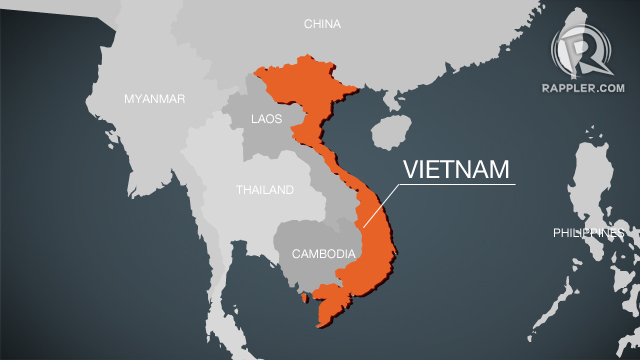SUMMARY
This is AI generated summarization, which may have errors. For context, always refer to the full article.

In history, not a lot of countries that were once divided were eventually reunited – and even fewer are considered a reunification success.
Vietnam suffered through colonization, World War II and even the Cold War. It was once divided by violence, and it was violence that ultimately led the North and the South to again become one country.
It has taken a lot for this Southeast Asian country to come to where it is now. Today the one-party communist state has found itself a niche in the international community and has earned its place among other rising economies in the region.
The country was formerly a part of Imperial China but it became independent in 938 A.D. Its name literally means “Southern Viet” which, back then, was used to address people living in Southern China.
Despite the close ties with China, Vietnam has its own unique culture. It has its own language called Quốc Ngữ and varied style of writing.
Vietnam even had its own set of royals but this only lasted halfway through the 19th century until the Indochina Peninsula was colonized by France.
The French influence
The French occupation, which lasted from 1862 to 1954, left Vietnam with beautiful colonial buildings and food that is uniquely Asian but also partly French.
Locals feast on “Bánh mì,” or the Vietnamese version of baguette, made of rice flour and usually filled with grilled meat, coriander and pickled carrots.
Coffee, which was introduced by the French to Vietnam in the 1800s, remains popular in the country and the region – with the cafe industry continuously thriving.
Though a good number of Vietnamese believe that the French occupation was a dark time in their history, some regard it as a high point that helped shape the country’s development
The French occupation was slightly interrupted when the Japanese occupied Vichy French Indochina in the 1940s.
However, the resilient Vietnamese who fought for their freedom were able to ward off the French, overthrowing them in 1954.
Divided
War left Vietnam politically divided between rivals North and South. The conflict later escalated with the United States aiding the South (Republic). The US was then on a mission to crush the Soviet Union’s promotion of communism and was bent on spreading democracy in the region.
Vietnam’s story is often compared to that of the two Koreas. However, Vietnam already had its happy ending. Vietnamese guerrillas defeated the US military, prompting them to pull out. The communists in the North won the war, making Vietnam whole once more.
Isolated no more
Under a communist government, Vietnam was isolated during its first few years as a unified state.
But in the late 1980s, the Vietnamese government implemented economic reforms and opened the country to the world.
Such reforms aimed to build a strong, “socialist-oriented market economy” which later on succeeded in integrating the communist state into the world economy. By the year 2000, Vietnam was able to open its own stock exchange, and the success of economic reforms led to the country’s membership to the World Trade Organization (WTO) in 2007.
Though most of its citizens claim that income inequality is widespread in Vietnam, the country has been recognized as one of the 11 major economies in 2011. Vietnam’s economic growth is recognized as one of the fastest in the world.
And despite the US intervention in the 2nd Indochina War which left a lot of the Vietnamese population bitter against the Americans, the US is currently one of Vietnam’s major trading partners and allies.
During the 1990s, Vietnam made an effort to establish diplomatic relations with other countries and was able to connect to most nations. It also became the Association of Southeast Asian Nation’s (ASEAN) 7th member, after joining it in 1995.
As ASEAN coordinator for the UN Human Rights Council, Vietnam recently affirmed the association’s commitment to upholding, promoting, and protecting human rights. However, the country is reportedly known for actively suppressing religious freedom and public political dissent.
The International Federation for Human Rights (IFHR) claimed that there are 212 Vietnamese dissidents behind bars and that many more are under house arrest – making Vietnam the country in Southeast Asia with the highest number of political prisoners.
Next challenge
But these days, Vietnam is focused on its next challenge – becoming a developed country by the year 2020.
With over 93 million people as of 2015, Vietnam is currently one of the world’s most populous countries.
Its beautiful coastline and picturesque mountains attract many tourists.
But the attraction that keeps tourists coming is Halong Bay – a 120-kilometer long coastline in the northern part of Vietnam which features thousands of small islands. Its name literally translates to “Bay of Descending Dragons” and looks like a scenery from an Asian fairy tale.
Vietnam maintains cordial diplomatic relations with its fellow ASEAN members despite being engaged in territorial disputes with Brunei, Malaysia, the Philippines, and even non-ASEAN states Taiwan and China. All countries are staking claim to some or all of the disputed Spratly Islands located near the main island of Palawan, which is part of the Philippines.
Vietnam is locked in another territorial dispute with China for another island chain in the South China Sea called the Paracel islands. – Rappler.com
Add a comment
How does this make you feel?
There are no comments yet. Add your comment to start the conversation.